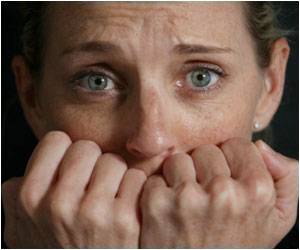
The researchers were interested in finding out whether disgust skews our perceptions. Disgust motivates cleanliness, they reasoned, and cleanliness is symbolized across many cultures as whiteness.
In that case, the researchers hypothesized, feeling disgust might make people more sensitive to impurities in the color white, which would indicate dinginess or dirt. They conducted a series of three experiments to test the idea.
In the first, 122 undergraduate students were shown four gray rectangles on a computer screen, one slightly darker or lighter than the others. They were asked to pick the one that was a different shade. After the fact, the students filled out questionnaires about their personal sensitivity to disgust, answering, for example, how grossed-out they'd be at seeing something like maggots in a garbage can.
A second study, this one with 51 undergraduate participants, mimicked the first, but asked students to detect a faint numeral on either a white or gray background.
In both studies, the researchers found the more disgust-sensitive the student, the more likely they were to detect differences in shade on the white and lighter gray side of the spectrum. They did not, however, get any better at detecting differences in dark grays, suggesting their perceptual shift was focused on the brightness of whites only.
Advertisement
That turned out to be the case with disgust, too. People who were generally sensitive to disgust became better at distinguishing whites and light grays after seeing gross images. People not sensitive to disgust showed no change, perhaps because they simply weren't grossed out enough by the images.
Advertisement
People who are sensitive to disgust may be more in-tune with the differences between a bright white and a dingy white because they're motivated by their concerns with cleanliness to pay attention to those shades, the researchers explained.
Or they may have sharper perceptions in the first place, which lead them to notice dirt where others overlook it, contributing to their disgust. The anterior insula, a small nugget of nervous tissue buried deep in the brain, may be the region that influences these perceptions, the researchers suggested.
The researchers reported the finding online in the journal Psychological Science.
Source-ANI









